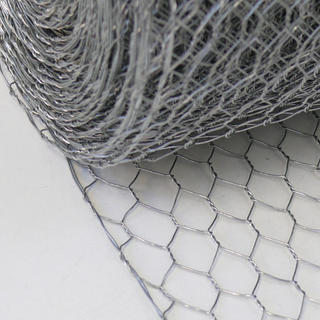Hexagonal Wire Netting, commonly known as chicken wire, is a flexible mesh structure formed by twisting and weaving steel wires into a distinctive hexagonal pattern. This lightweight yet durable netting features a honeycomb-like design that provides both strength and adaptability, making it ideal for applications requiring containment with some degree of movement or expansion.
Primarily used in agriculture, hexagonal wire netting serves as enclosures for poultry, garden fencing, and protective barriers for plants against small animals. Its open weave allows visibility and airflow while maintaining security. In construction, it reinforces plaster and stucco work, acting as a stabilizing layer for walls and ceilings. The netting is also employed in DIY projects, gabion baskets for erosion control, and even artistic installations due to its malleable nature.
Available in galvanized, PVC-coated, or stainless steel variants, hexagonal wire netting resists rust and weathering, ensuring longevity in outdoor environments. Its balance of affordability, versatility, and ease of installation has made it a staple in both rural and urban settings for over a century. The mesh's unique geometry distributes stress evenly, preventing localized weaknesses while maintaining structural integrity under tension.
Hexagonal Wire Netting for Chicken Coops and Poultry Fencing
Hexagonal wire netting, commonly known as chicken wire, is an essential material for poultry farming due to its lightweight, flexibility, and cost-effectiveness. The distinctive six-sided mesh design provides a secure barrier that keeps chickens and other small poultry contained while preventing predators like foxes and raccoons from entering. Its open weave allows for proper ventilation, reducing moisture buildup and maintaining a healthy coop environment. The netting is easy to install and can be shaped to fit various coop designs, including curved roofs or custom enclosures. Available in different gauges (typically 19-22 gauge) and mesh sizes (1/2" to 2"), it accommodates chicks to full-grown birds. While not as rigid as welded wire, its flexibility makes it ideal for temporary or movable fencing. For enhanced durability in outdoor settings, galvanized or PVC-coated hex netting is recommended to resist rust and weathering.
Hot-Dip Galvanized vs Electro Galvanized Hex Netting
The key difference between hot-dip and electro galvanized hex netting lies in the zinc coating process and longevity. Hot-dip galvanizing involves immersing the wire in molten zinc, creating a thick, durable layer that offers superior corrosion resistance—ideal for long-term outdoor use in poultry fencing, garden protection, or marine environments. Electro galvanizing applies zinc through an electrical process, resulting in a thinner, smoother coating suitable for indoor or short-term applications where cost is a priority. While electro galvanized netting is more affordable, it may require replacement sooner in harsh weather conditions. Hot-dip galvanized netting, though pricier, can last decades without rusting, making it the preferred choice for permanent installations exposed to rain, soil, or humidity.
How to Strengthen Hex Wire Netting with Stakes and Frames
To reinforce hex wire netting and prevent sagging or predator breaches, sturdy stakes and frames are essential. For ground stability, drive metal T-posts or wooden stakes every 4-6 feet along the perimeter, securing the netting with galvanized staples or zip ties. Adding a pressure-treated wooden or metal frame around the edges provides structural rigidity, especially for large enclosures. For extra protection against digging animals, bury the bottom 12 inches of netting outward in an L-shape or attach it to an apron of hardware cloth. Overhead runs can be strengthened with arched PVC pipes or welded wire grids to support the mesh and withstand snow or wind loads. Regular inspection and tightening of fasteners ensure maintained tension over time, preserving the fence’s effectiveness. Combining these methods transforms flexible hex netting into a robust, long-lasting barrier.


